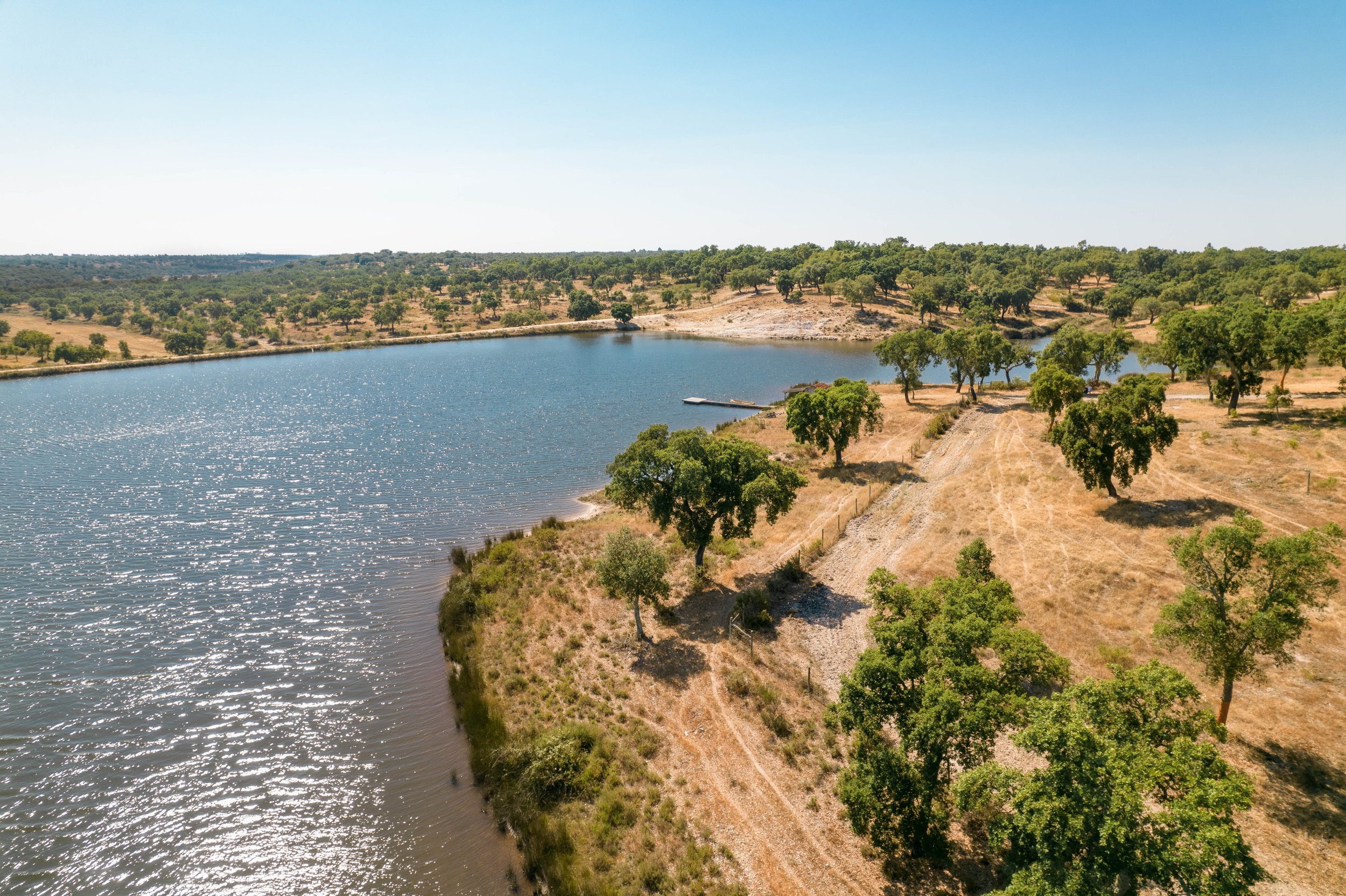
Sustainability
You are reading about CORK | Skip to LAFITTE >
Working towards a better tomorrow
Ever since the beginning of its operation, sustainability has been one of Lafitte’s core concerns. We believe cork is one of Earth’s greatest works, and want to honor the very system that gifted us with it: nature. As such, every step of our production process is continuously improved with the aim to reduce our ecological footprint.

35
Biodiversity sanctuaries worldwide, the Montado being one of them
14.000.000
Tons of atmospheric CO2 offset
every year by the Montado
34%
Of the world’s cork oak forest area
is located in Portugal
49%
Of the world’s cork production
is in Portugal
135
Plant species per square metre
of the cork oak forests
+200
Animal species inhabit the Montado
4x
Less CO2 is released by the production of cork stoppers (compared to aluminum)
730.000
Hectares of land constitute the Portuguese cork oak forest area
What makes cork so unique?
All natural
Cork is the bark of Quercus suber, also known as Cork Oak, a tree capable of living up to 250 years. It is a 100% natural, 100% reusable, and 100% recyclable raw material, consisting of a hive of microscopic cells filled with a gas identical to air and coated with, mainly, suberin and lignin.
This unique chemical composition provides cork with a multitude of features - lightness, elasticity, compressibility, resistance, impermeability, thermal and acoustic insulation - unequaled by any material created by human hands. These one-of-a-kind characteristics allow it to be used for several purposes which, in turn, make it an easily reusable material.
Eco-friendly
Environmentally speaking, the cork oaks from which the cork is harvested play a fundamental role in soil preservation, regulation of the hydrological cycle, and water quality.
The extraction of cork from cork oaks does not damage them - quite the contrary. Careful harvesting, carried out by professionals, is not harmful to the trees as they are stripped of their bark and not cut. The cork naturally renews itself after nine years. The cork industry allows these vast forests to be protected and explored, without disturbing their ecosystem - in fact, stripped cork oaks absorb 3 to 5 times more carbon dioxide than unstripped trees.
These trees actively counteract the desertification tendency existent in Mediterranean regions. In addition to that, due to their vast oxygen production, cork oaks offset about 14 million tons of carbon dioxide every year and present themselves as a unique and extraordinarily rich ecosystem, housing thousands of species. In fact, the Montado is internationally recognized for its biodiversity, being one of the 35 global biodiversity sanctuaries.
Reusability
The cork used in the production of cork stoppers is recycled into other products, meaning that any waste arising from its production is not actually waste at all!
This cork is ground up and used in other products, such as conglomerates, panels, footwear, vehicles, home decor, and much more.
Aging capacity
About 50% of the volume of cork consists of a gas identical to air, which grants it an extraordinary lightness, making it capable of floating. This chemical composition also gives cork a surprising elasticity, making it capable of adapting to changes in temperature and pressure without suffering variations. This same elasticity causes the cork to expand inside the neck of a bottle in order to seal the liquid contained within.
However, the magic is in the tiniest details - its microscopic porosity allows oxygen to interact with the wine in just the perfect measure to encourage rich aging.
Thanks to the impermeability provided by the suberin that surrounds the walls of its cells, cork works as an excellent insulator, resisting humidity and aging without deteriorating.

Choose Cork.
The consumption of bottles sealed by cork stoppers is capable of offsetting a good part of the pollution caused by the emissions resulting from shipping.
Adding to the list of ecological and economic benefits, there’s only one thing left to mention: the pleasure itself. It is no coincidence that cork has been admired for centuries. Nothing so faithfully preserves the taste of the wine's ancestral body and color as the natural purity of a cork stopper.

And what about Lafitte?
Our second nature
Throughout the entire product line, Lafitte Group is firmly committed to providing our customers with sustainable environmentally friendly solutions. We are proud to make use of virtuous and eco-responsible methods to produce our cork closures and capsules. And, of course, the main raw material used by Lafitte - cork - is entirely natural, clean and renewable.
All of the waste from the production of cork closures is recovered and repurposed in new production channels. The residual dust from the production process is used to generate energy, diminishing the use of fossil fuels and carbon emissions of Lafitte’s processing facilities.

Lafitte Group embraces a vision of harmony between economy, society, and the environment.
Guarding the forest
Lafitte Group has a structured department dedicated solely to drawing strategic, long-term collaboration deals with forest owners to ensure the protection of these natural areas and thus, preserving these biological hotspots.





